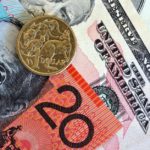 Gold advanced on Friday to the strongest level since November, marking the largest weekly advance in six months, as downbeat US economic data boosted demand for haven assets, with holdings in the SPDR Gold Trust, the biggest bullion-backed ETF, expanding to the strongest level in almost two months. A weaker US dollar also fostered positive sentiment.
Gold advanced on Friday to the strongest level since November, marking the largest weekly advance in six months, as downbeat US economic data boosted demand for haven assets, with holdings in the SPDR Gold Trust, the biggest bullion-backed ETF, expanding to the strongest level in almost two months. A weaker US dollar also fostered positive sentiment.
On the Comex division of the New York Mercantile Exchange, gold futures for settlement in April rose by 1.43% on Friday to settle the week at $1 318.70 per troy ounce. Prices touched a session high at $1 321.30 per troy ounce, the strongest level since November 7, while day’s low was touched at $1 300.00 an ounce.
The yellow metal settled the 5-day period 4.1% higher, capping the biggest weekly gain since the period ended August 16. Gold futures are up 8.3% this year after a 1.5% slump in the MSCI All-Country World Index of equities, mainly driven by a rout in emerging markets, boosted demand for haven assets.
However, the precious metal settled last year 28% lower, the steepest annual decline since 1981 as investors lost faith in the metal as a store of value and amid speculation Fed will continue scaling back its monetary stimulus throughout 2014.
“Gold got seriously hammered last year, and with the stock markets not performing as well as expected, some investors are reconsidering their allocation to gold,” Wallace Ng, a Shanghai-based trader at Gemsha Metals Co., said in an Bloomberg interview. “Physical demand this week has been good. But that’s not enough to sustain the price move, which tells me it’s mainly driven by sentiment and technicals.”
Fed stimulus outlook
The yellow metal drew support as few downbeat reports cast some doubt that the Federal Reserve will keep scaling back its stimulus at each policy meeting, before exiting the program at the end of the year.
A report by the US Federal Reserve on Friday revealed that the US industrial output declined by 0.3% in January, the most since April, short of analysts’ predictions for a 0.2% advance and after a 0.3% increase in the preceding month.
Data by the US Labor Department revealed that the nation’s import prices rose 0.1% in January, defying analysts’ projections for a 0.1% drop and after import prices increased 0.2% in December. However, on year-over-year basis, import prices slumped 1.5% in December, after a 1.3% decline in the previous month.
The US Department of Labor reported on Thursday that the number of people who filed for unemployment benefits for the first time unexpectedly increased to 339 000 in the week ended February 8, while analysts projected the number of initial jobless claims will decline to 330 000 from 331 000 in the previous week.
A separate report by the US Census Bureau, revealed the nation’s retail sales dropped by 0.4% in January, the most since June 2012 and after a downward revised 0.1% decrease in the previous month. Analysts had expected the retail sales index to remain flat in January. Retail sales are closely watched, because they provide crucial information regarding the tendency in consumer spending in the United States, which, on the other hand, accounts for about 70% of nation’s Gross Domestic Product.
Federal Reserve President for St. Louis James Bullard said on Wednesday, policy makers will be cautious, when deciding to change the pace of their cuts to to bond buying, because this can have potentially significant impact on markets.
Janet Yellen, in her first testimony to Congress as head of the Fed, said on February 11, the central bank will “likely reduce the pace of asset purchases in further measured steps at future meetings”, if the labor market continues to recover and inflation rises.
Yellen underscored “continuity” in the Federal reserve monetary policy, emphasizing that she strongly approves the approach of her predecessor, Ben Bernanke.
The Fed Chairman also reiterated that the pace of cutting back Fed stimulus was not on a “preset course”.
The central bank announced its decision to reduce monthly monetary stimulus by 10 billion USD to 65 billion USD at the meeting on policy in January, underscoring that labor market indicators, which “were mixed but on balance showed further improvement”, while nation’s economic growth has “picked up in recent quarters.” Fed policymakers are to hold their next meeting on March 18th-19th.
The Federal Reserve will probably continue to pare stimulus by $10 billion at each policy meeting before exiting the program in December, according to a Bloomberg News survey of 41 economists, conducted on January 10th.
A weaker dollar also supported the yellow metal. The US dollar index, which measures the greenback’s performance against a basket of six major peers, lost 0.23% on Friday to settle the week at 80.18. Prices hit a session high at 80.36, while day’s low was touched at 80.11, the weakest level since December 31st. The contract settled the week 0.72% lower. Weakening of the greenback makes dollar-denominated commodities cheaper for foreign currency holders and boosts their appeal as an alternative investment.
Also fostering positive sentiment, assets in the SPDR Gold Trust, the biggest bullion-backed ETP, rose by 0.9% to a two-month high of 806.35 tons on Thursday. Holdings are 1.2% higher this week and headed for a third 5-day period of advances, after losing 41% in 2013. A total of 553 tons has been withdrawn last year. Billionaire hedge-fund manager John Paulson who holds the biggest stake in the SPDR Gold Trust told clients at the end of last year that he wouldn’t invest more money in his gold fund because it isn’t clear when inflation will accelerate.





